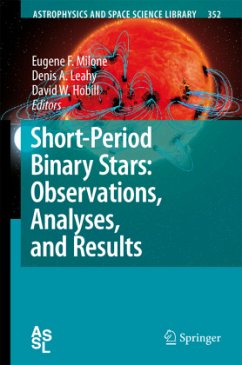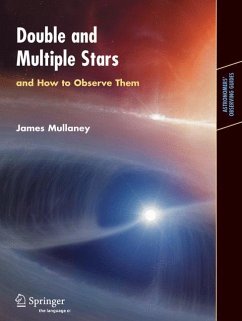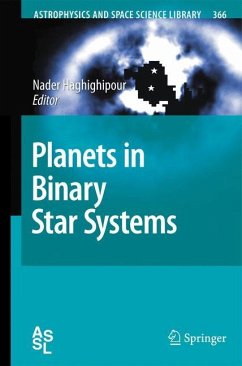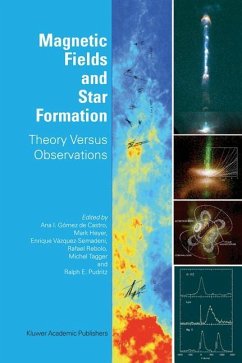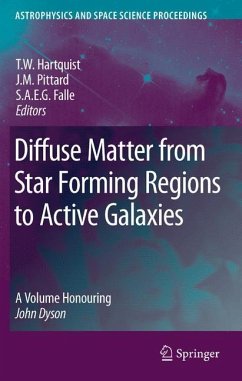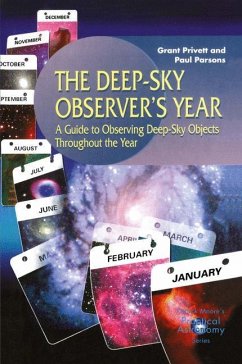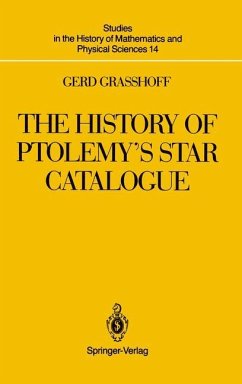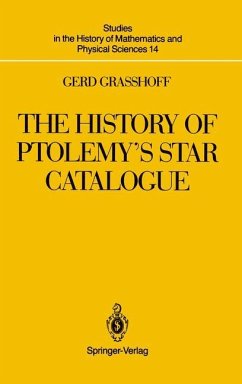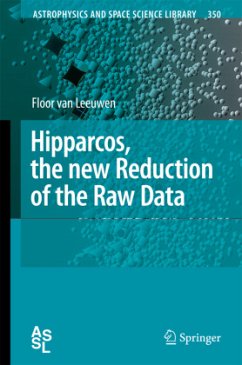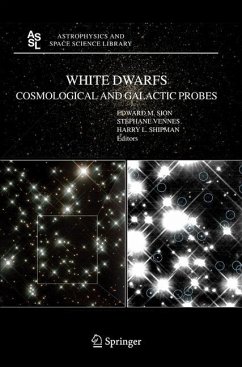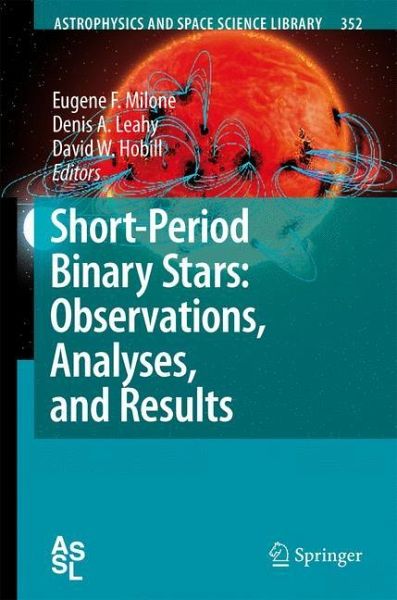
Short-Period Binary Stars: Observations, Analyses, and Results
Versandkostenfrei!
Versandfertig in 6-10 Tagen
76,99 €
inkl. MwSt.

PAYBACK Punkte
38 °P sammeln!
Short-period binaries run the gamut from widely separated stars to black-hole pairs; in between are systems that include neutron stars and white dwarfs, and partially evolved systems such as tidally distorted and over-contact systems. These objects represent stages of evolution of binary stars, and their degrees of separation provide critical clues to how their evolutionary paths differ from that of single stars. The widest and least distorted systems provide astronomers with the essential precise data needed to study all stars: mass and radius. The interactions of binary star components, on t...
Short-period binaries run the gamut from widely separated stars to black-hole pairs; in between are systems that include neutron stars and white dwarfs, and partially evolved systems such as tidally distorted and over-contact systems. These objects represent stages of evolution of binary stars, and their degrees of separation provide critical clues to how their evolutionary paths differ from that of single stars. The widest and least distorted systems provide astronomers with the essential precise data needed to study all stars: mass and radius. The interactions of binary star components, on the other hand, provide a natural laboratory to observe how the matter in these stars behaves under different and often varying physical conditions. Thus, cataclysmic variables with and without overpoweringly strong magnetic fields, and stars with densities from that found in the Sun to the degenerate matter of white dwarfs and the ultra-compact states of neutron stars and black holes areall discussed. The extensive index permits cross-referencing.





